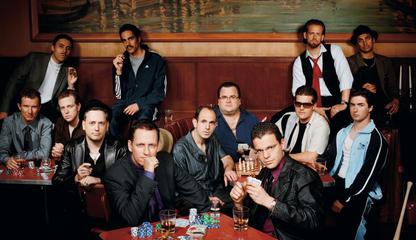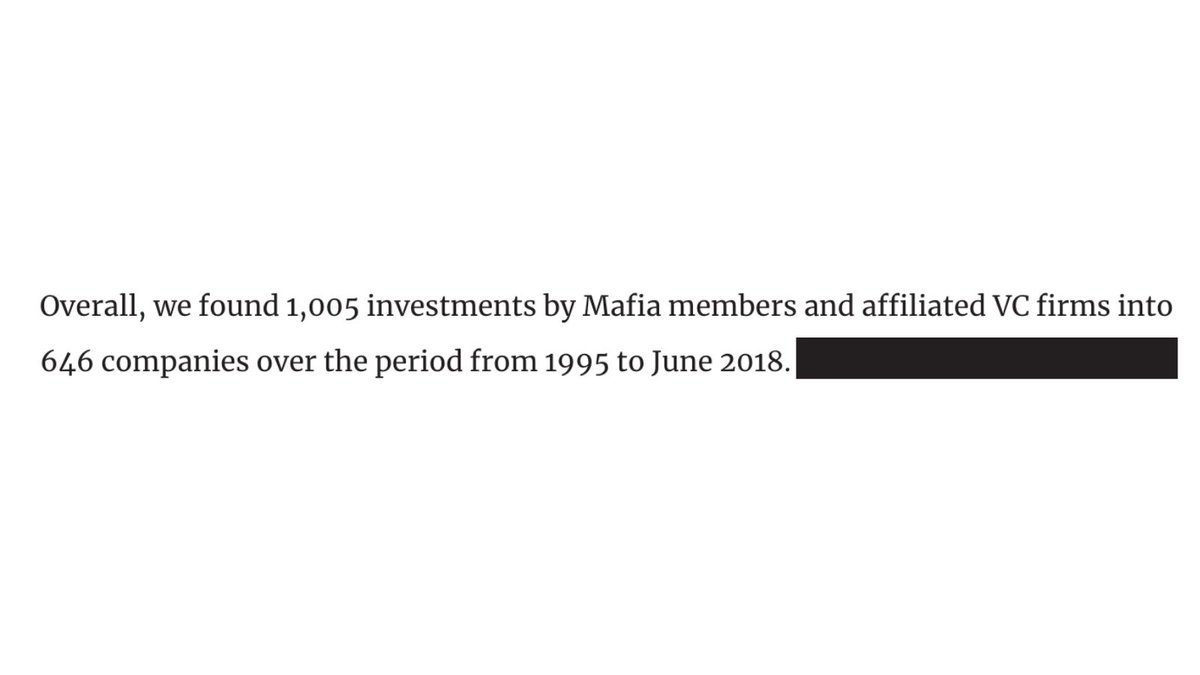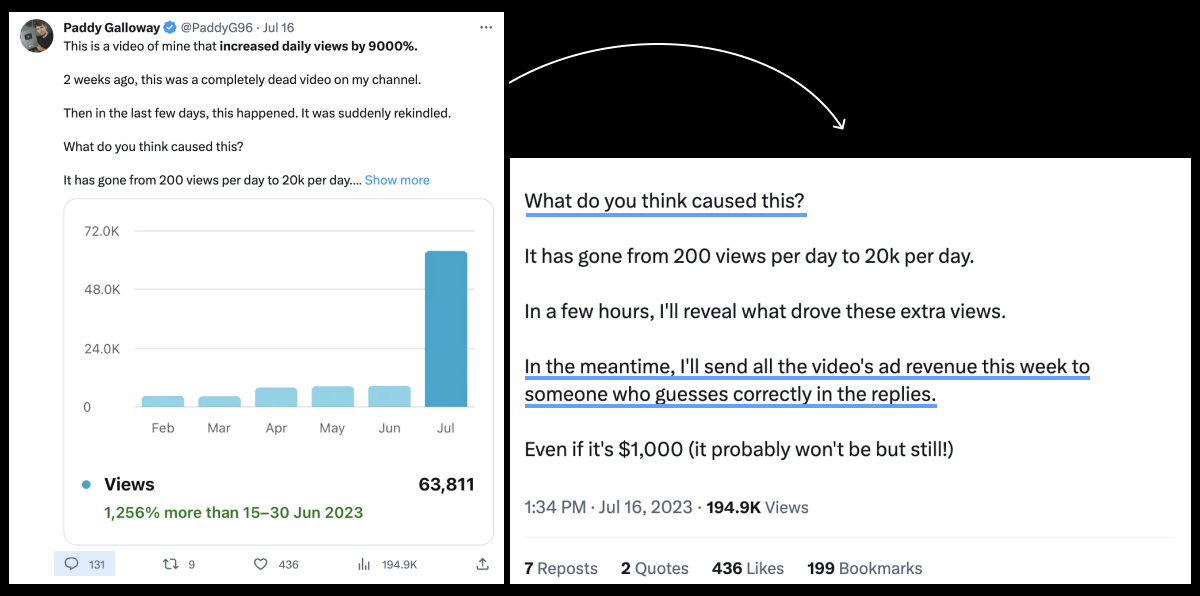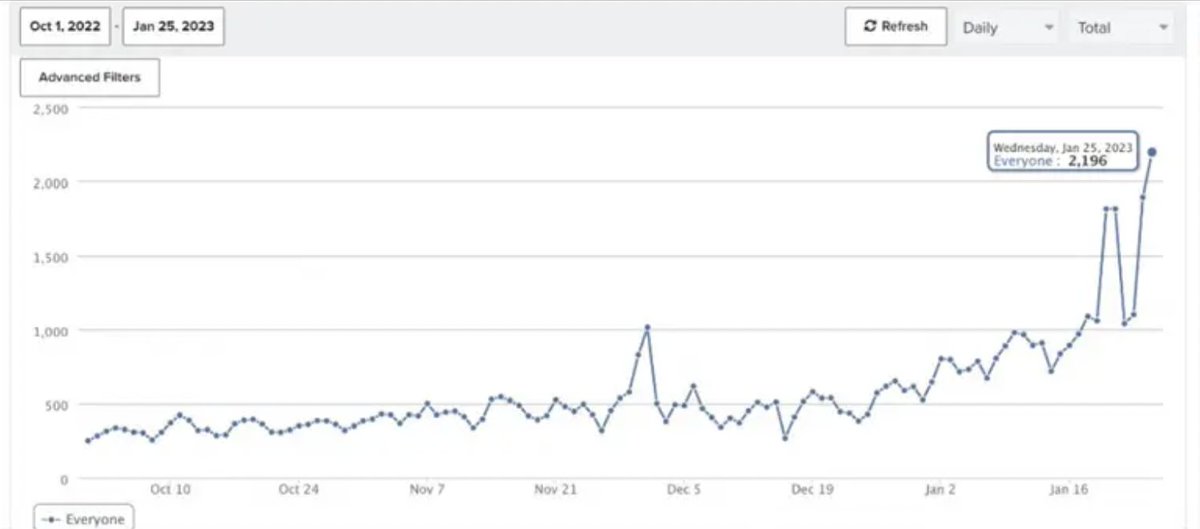Ever heard of the PayPal Mafia?
It's a team of former PayPal employees so prolific that Business Insider labeled them "The Richest Group Of Men In Silicon Valley."
After leaving PayPal, many of them went on to build some of the largest companies we now know.
Here's the list 🧵
It's a team of former PayPal employees so prolific that Business Insider labeled them "The Richest Group Of Men In Silicon Valley."
After leaving PayPal, many of them went on to build some of the largest companies we now know.
Here's the list 🧵

1. @peterthiel
Peter Thiel was the co-founder and CEO of PayPal.
He was referred to as the "Don" of the PayPal Mafia.
He earned $55m after selling PayPal to eBay.
His net worth is now over $2B.
Peter Thiel was the co-founder and CEO of PayPal.
He was referred to as the "Don" of the PayPal Mafia.
He earned $55m after selling PayPal to eBay.
His net worth is now over $2B.
2. @mlevchin
Max Levchin was also the co-founder of PayPal and the CTO.
He was called the "consigliere" of the PayPal Mafia.
Levchin made $34m from the sale to eBay and then founded Slide.
He sold Slide to Google in 2010 for $180m.
His net worth is $300m+.
Max Levchin was also the co-founder of PayPal and the CTO.
He was called the "consigliere" of the PayPal Mafia.
Levchin made $34m from the sale to eBay and then founded Slide.
He sold Slide to Google in 2010 for $180m.
His net worth is $300m+.
3. @elonmusk
Elon Musk was the founder of X.com
PayPal merged with https://t.co/ko4ymHGK2V which made Elon the largest shareholder of PayPal.
He made $165m after the sale.
He now runs:
1. Tesla
2. SpaceX
3. The Boring Company
Net worth: $160B+
Elon Musk was the founder of X.com
PayPal merged with https://t.co/ko4ymHGK2V which made Elon the largest shareholder of PayPal.
He made $165m after the sale.
He now runs:
1. Tesla
2. SpaceX
3. The Boring Company
Net worth: $160B+
4. @DavidSacks
After leaving McKinsey & Company, David joined PayPal as their COO.
After PayPal David:
- produced 'Thank You For Smoking'
- founded Geni.com
- social network Yammer
- threw a 40th bday that cost over $1m
Microsoft acquired Yammer in for $1.2b
After leaving McKinsey & Company, David joined PayPal as their COO.
After PayPal David:
- produced 'Thank You For Smoking'
- founded Geni.com
- social network Yammer
- threw a 40th bday that cost over $1m
Microsoft acquired Yammer in for $1.2b
5. @stevechen
Steve Chen moved to SV to join PayPal as a top engineer.
There he met Jawed Karim and Chad Hurley and later founded Youtube.
He joined Google Ventures in 2014.
In March 2019 he became an advisor to Theta.
His estimated net worth is $300m+.
Steve Chen moved to SV to join PayPal as a top engineer.
There he met Jawed Karim and Chad Hurley and later founded Youtube.
He joined Google Ventures in 2014.
In March 2019 he became an advisor to Theta.
His estimated net worth is $300m+.
6. @reidhoffman
Reid first joined PayPal as their COO and after the sale to eBay he became the VP.
He later co-founded LinkedIn in 2002.
His shares in LinkedIn are worth well over $2b.
Reid has also been an angel investor in over 80 companies.
His net worth is $4b+.
Reid first joined PayPal as their COO and after the sale to eBay he became the VP.
He later co-founded LinkedIn in 2002.
His shares in LinkedIn are worth well over $2b.
Reid has also been an angel investor in over 80 companies.
His net worth is $4b+.
7. @KenHowery
Ken was a co-founder and COO for PayPal from 1998 - 2002.
He started Founders Fund less than 12 months later with "pals" Thiel and Nosek.
His net worth is $1.5b+.
Ken was a co-founder and COO for PayPal from 1998 - 2002.
He started Founders Fund less than 12 months later with "pals" Thiel and Nosek.
His net worth is $1.5b+.
8. @Chad_Hurley
Chad Hurley joined the PayPal team as their web designer.
After PayPal, Chad, Steve, and Jawed founded Youtube in 2005.
They sold Youtube to Google in 2006 for $1.6b.
His net worth is $350m+.
Chad Hurley joined the PayPal team as their web designer.
After PayPal, Chad, Steve, and Jawed founded Youtube in 2005.
They sold Youtube to Google in 2006 for $1.6b.
His net worth is $350m+.
9. @ericmjackson
Eric was the marketing executive at PayPal who went on to write the book "The PayPal Wars."
After PayPal, he became chief executive officer of WND Books and co-founded CapLinked.
His net worth is unknown.
Eric was the marketing executive at PayPal who went on to write the book "The PayPal Wars."
After PayPal, he became chief executive officer of WND Books and co-founded CapLinked.
His net worth is unknown.
10. Jawed Karim
Jawed joined PayPal as an engineer. He created their anti-fraud system.
After the sale, he joined forces with @Chad_Hurley and @stevechen to launch Youtube.
Karim launched Youniversity Ventures in 2008 to help students develop business ideas.
Net worth = $140m
Jawed joined PayPal as an engineer. He created their anti-fraud system.
After the sale, he joined forces with @Chad_Hurley and @stevechen to launch Youtube.
Karim launched Youniversity Ventures in 2008 to help students develop business ideas.
Net worth = $140m
11. Jared Kopf
Jared was Peter Thiel's executive assistant.
After leaving PayPal, Jared co-founded Slide, HomeRun, and NextRoll.
He has made over 60 investments and now serves as Chairman of AdRoll.
His net worth is unknown.
Jared was Peter Thiel's executive assistant.
After leaving PayPal, Jared co-founded Slide, HomeRun, and NextRoll.
He has made over 60 investments and now serves as Chairman of AdRoll.
His net worth is unknown.
11. @JTLonsdale
Joe started as a finance intern at PayPal before moving into venture capital.
Since PayPal, he's worked at VC firms Clarium Capital, Formation 8, and 8VC.
Lonsdale also co-founded Palantir.
His net worth is $400m+.
Joe started as a finance intern at PayPal before moving into venture capital.
Since PayPal, he's worked at VC firms Clarium Capital, Formation 8, and 8VC.
Lonsdale also co-founded Palantir.
His net worth is $400m+.
12. @davemcclure
Dave McClure was PayPal's director of marketing for 4 years.
He left PayPal in 2004.
After PayPal, he had a small run at Founders Fund before launching 500 Startups.
He's invested in 500+ startups.
His net worth is $5m+.
Dave McClure was PayPal's director of marketing for 4 years.
He left PayPal in 2004.
After PayPal, he had a small run at Founders Fund before launching 500 Startups.
He's invested in 500+ startups.
His net worth is $5m+.
13. @andrewjmack
Andrew joined PayPal in 2001.
He worked closely as Peter Thiel's assistant as they prepped to IPO.
After Paypal, he helped launch hedge fund company Clarium Capital.
He and Peter Thiel founded Valar Ventures together.
Andrew joined PayPal in 2001.
He worked closely as Peter Thiel's assistant as they prepped to IPO.
After Paypal, he helped launch hedge fund company Clarium Capital.
He and Peter Thiel founded Valar Ventures together.
14. Luke Nosek
Luke PayPal co-founded PayPal and was the former vice president of marketing and strategy.
After PayPal, he became a partner at Founders Fund with Peter Thiel and Ken Howery.
His net worth is unknown.
Luke PayPal co-founded PayPal and was the former vice president of marketing and strategy.
After PayPal, he became a partner at Founders Fund with Peter Thiel and Ken Howery.
His net worth is unknown.
15. Keith Rabos
Keith was a former executive at PayPal.
He later worked at:
1.LinkedIn
2. Slide
3.Square,
4. Khosla Ventures
His estimated net worth is $1b+.
Keith was a former executive at PayPal.
He later worked at:
1.LinkedIn
2. Slide
3.Square,
4. Khosla Ventures
His estimated net worth is $1b+.
16. Russel Simmons
Russel was PayPal's Lead Software Architect.
After PayPal, he joined forces with Jeremy Stoppelman to co-found Yelp.
His net worth is unknown.
Russel was PayPal's Lead Software Architect.
After PayPal, he joined forces with Jeremy Stoppelman to co-found Yelp.
His net worth is unknown.
17. Jeremy Stoppelman
Jeremy joined PayPal as an engineer while it was still known as X.com.
Jeremy eventually became the Vice President of Engineering.
After the eBay sale, Jeremy joined Russel Simmons to launch Yelp.
His net worth is $150m+.
Jeremy joined PayPal as an engineer while it was still known as X.com.
Jeremy eventually became the Vice President of Engineering.
After the eBay sale, Jeremy joined Russel Simmons to launch Yelp.
His net worth is $150m+.
18. Yishan Wong
Yishan was the former engineering manager at PayPal.
In 2005, he joined Facebook as a director of engineering.
After leaving Facebook, he became the CEO of Reddit.
Yishan was the former engineering manager at PayPal.
In 2005, he joined Facebook as a director of engineering.
After leaving Facebook, he became the CEO of Reddit.
Want more breakdowns and how-tos on your feed? Then make sure to follow @alexgarcia_atx because I'm writing a marketing thread for the next 31 days. (sorry this one wasn't a marketing thread)
If you rather get it in your inbox, then 👇
bit.ly/3flYp6b
If you rather get it in your inbox, then 👇
bit.ly/3flYp6b
The only team that can compare?
The 1992 USA Basketball Dream Team
The 1992 USA Basketball Dream Team
• • •
Missing some Tweet in this thread? You can try to
force a refresh
























